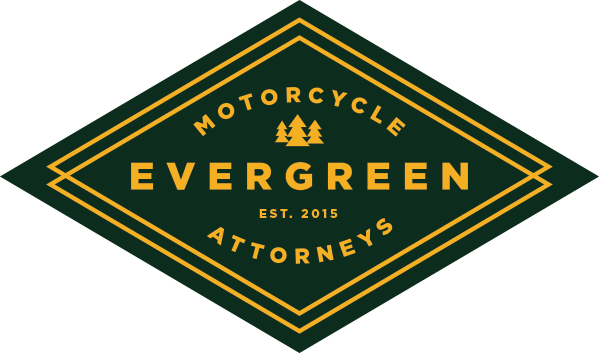
Riding a motorcycle responsibly and safely means abiding by all the rules and regulations of the road. These laws were put in place to ensure the safety of both the motorcycle rider and surrounding motorists.
Staying in compliance with the law not only increases the odds of not getting into an accident, but it also helps you avoid expensive citations, which can cost hundreds of dollars and potentially raise your insurance rates.
There is a third reason why all motorcycle riders should make a conscious effort to adhere to the law: comparative negligence.
Comparative Negligence
Washington State recognizes comparative negligence when it comes to personal injury law cases. This means that if the plaintiff was careless or negligent, they must share some of the responsibility for their injuries. This can translate into a lowered amount awarded as compensatory damages.
If you are in an accident while splitting lanes, it could have an adverse effect upon the outcome of your claim. At Evergreen Motorcycle Attorneys, we want to share five Washington motorcycle laws that you might not be aware of:
Lane Splitting is Still Illegal
In 2017, Washington State Legislators attempted to make lane splitting legal. Lane splitting is when a motorcyclist drives between two moving vehicles on a city street. Most people heard of the attempt to repeal the lane splitting law and automatically assumed that it was going to pass.
Motorcycle License and Registration Requirements
Before you’re allowed to register a motorcycle, you will need to have a valid driver’s license that has a motorcycle endorsement, which is the addition of a credential to your existing license. The endorsement states that you have taken the requisite training/tests and are legally allowed to ride a motorcycle.
There are two ways of going about this:
- Go to the DMV and take a riding skills and knowledge test.
- Take and successfully complete a motorcycle riding course.
After you have your license, you can now register your bike. Head on down to the DMV and bring with you your license (with endorsement), proof of ownership of your bike, and a filled-out odometer disclosure statement. Once you get your license plate, it must be displayed in the proper place on the bike.
Red Lights
Most red lights nowadays have special sensors built into the ground. They can tell when a car is waiting at a red light and will adjust the timing accordingly. The problem with these sensors is that they sometimes have a hard time detecting motorcycles because they are so lightweight as compared to a car.
In this situation, a rider could legally proceed through a red light under certain circumstances that include:
- They have come to a complete stop at the red light
- They have waited for at least one light cycle.
- Riders may not violate the right-of-way of other pedestrians or vehicles.
Helmet and Noise Laws
Helmets must be worn at all times when riding on a motorcycle. State highways, city streets, and country roads all require a rider to have a helmet on. Wearing a helmet can literally mean the difference between life and death when involved in a motorcycle accident.
Washington State also has a muffler noise law. Washington Administrative Code § 173-62-030 states that the mufflers of a bike cannot exceed 78 dBA at speeds of 45mph or less or over 82 dBA for speeds over 45 mph.
Motorcycle Injury Law Firm in Tacoma
If you have any questions about the law as it pertains to motorcyclists or were injured in an accident, give us a call at (253) 472-6000. At Evergreen Motorcycle Attorneys, we aggressively advocate on behalf of bike riders who have sustained injuries in accidents.
Many of our attorneys are life-long motorcycle riders themselves and share the same passion for two wheels on the open road that you do. Contact us today to speak to an attorney regarding your case.

